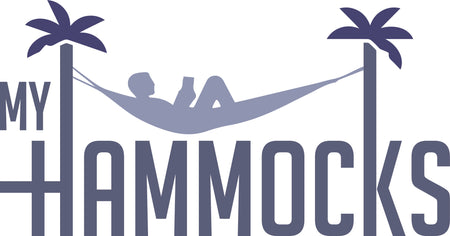
The Different Types of Hammocks
Hammocks are universally beloved as the ultimate way to relax and unwind. There’s nothing better than sitting or reclining in a comfortable cotton or nylon hammock, swaying gently in the pleasant breeze while reading a book, having a drink, or enjoying forty winks. But with so many different types of hammocks out there, it can be overwhelming to choose one that suits you best.
In this article, we’ll break it down for you, taking you through the features and benefits of each type of hammock. We’ve simplified the wide range of hammocks into four styles, giving you examples from our selection. While there is no definitive ‘best’ type of hammock, we are sure there is one that is best for you. Read on to find out which one that is, and get one step closer to owning the perfect hammock.
Traditional hammocks
Early traditional hammocks were woven from tree bark and sisal fibres by native inhabitants of Central and South America. Hammocks were first brought to Europe by Christopher Columbus, from the Bahamas. Hammocks were generally used for comfort by sailors aboard ships, or by explorers and soldiers in wooded regions. Now, we use them for our relaxation!
Traditional hammocks are made to be stretched between two attachment points like trees, posts or a frame. They are known for being both comfortable and durable. At MyHammocks, we offer traditional-style hammocks made of cotton or super nylon. We are particularly proud of our Mexican hammocks that combine cotton and nylon and feature vibrant colour schemes. Our hammocks are suitable for camping, indoor use, outdoor use, and use in resorts. We also have double hammocks and hammocks made especially for children.
You can’t go wrong with the classic style; whether you are outdoors or indoors, at home or in the wild, traditional hammocks provide a stylish and cosy way to relax, rest, and unwind.

Free standing hammocks
Free standing hammocks can be set up without the need for supports like trees or beams. Instead, a sturdy frame or stand supports the hammock bed. This frame and the whole hammock are completely portable once assembled. This type of hammock is especially helpful if you don’t have any trees or support beams to hang a traditional hammock for.
Another benefit of free standing hammocks over other types of hammocks is that you can set them up anywhere you want and move easily from place to place. This means that if you’ve set up out in the open and some storm clouds start to roll in, you can easily pick up your hammock and move under some shelter without having to worry about untying any fussy ropes or cables.
Swing chair hammocks
Also known as hanging chairs, swing chair hammocks are designed with a hanging point from which the seat hangs. The hanging point is attached to a beam, branch or hammock frame above the occupant. Our swing chair hammocks are made of soft cotton and strong nylon.
Swing chair hammocks are perfect for those with limited space, and they make a great accessory for your lounge or backyard. With their additional back support, swing chair hammocks also promote healthy posture while still being incredibly comfortable. You can choose to sit vertically or recline horizontally, making the swing chair hammock perhaps the most versatile option on this list.

Hammock chairs
Like the previous type of hammock, hammock chairs are usually hung from a ceiling hook or tree branch. The key difference between hammock chairs and swing chair hammocks is that hammock chairs are more likely to have a ‘seat’ built in.
This type of hammock is best for those who prefer sitting rather than reclining. Our seated hammock chairs are mobile, flexible, and comfortable. They come in a range of styles, from tasselled, timber-rail, bench-like chairs to polyester cotton blend cushioned seats.
Do all hammocks come with a stand?
The traditional hammock was designed to hang from structures like trees and beams, so these don’t come with a stand. Those that do include free standing hammocks, as these were designed to be completely portable. If you need a stand for a swing chair hammock or hammock chair, these can be purchased separately.

Which of these hammocks is most comfortable?
When someone asks us what the ‘best type of hammock’ is or which is the ‘most comfortable’, our answer is simple. They’re all comfortable! Each hammock is designed to be a little pocket of bliss. We hope that by reading this article and learning about the unique features of each type of hammock, your answer has become simple, too. It all comes down to how you like to relax. Our hammocks cover a broad range of relaxation styles, and only you know what the best type of hammock for you is.
If you love lying down and have space to spare, a traditional hammock is the way to go. If you love portability and move around a lot during your relaxation, a free standing hammock is your best bet. If you’re torn between sitting and lying, a swing chair hammock is your relaxation haven. If you prefer sitting on a gently swaying seat, a hammock chair may be best for you.
Which hammock will you take home?
No matter which type of hammock you choose, you will find relaxing bliss within its comfortable fabric. But if you’re unsure about which hammock is best for you, have a look at the item descriptions on our website. We’ll tell you what the hammock is made from, how it is assembled, and what it is best suited for.
So, what are you waiting for? Go ahead and invest in your personal haven! We can’t wait to welcome you to the hammock life.
Happy hammock hunting!
